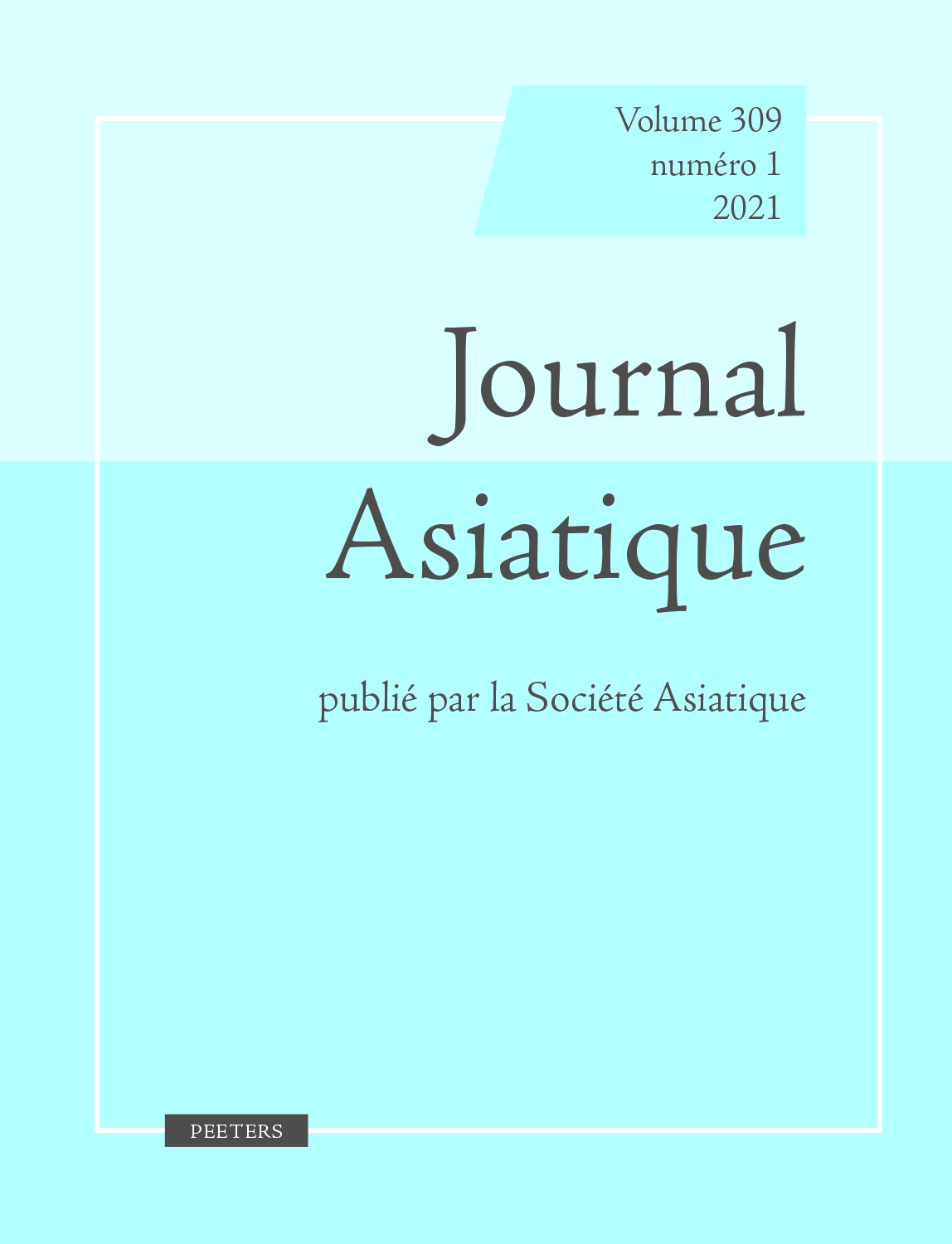 previous article in this issue previous article in this issue | next article in this issue  |

Preview first page |
Document Details : Title: The 'Additional Leaf' of the Abhidharmasamuccayabhāṣya Manuscript Subtitle: the Result of the Ten Bad Courses of Action Author(s): KRITZER, R. Journal: Journal Asiatique Volume: 290 Issue: 2 Date: 2002 Pages: 465-484 DOI: 10.2143/JA.290.2.504299 Abstract : A propos de la “feuille supplémentaire” du manuscript de l’Abhidharmasamuccayabhāṣya: les résultats des dix mauvais chemins de l’acte Dans son édition de l’Abhidharmasamuccayabhāṣya Tatia incorpore au texte le contenu de ce qu’il décrit comme étant une “feuille supplémentaire” du manuscript, dans laquelle les trois types de résultat des dix mauvaises pratiques sont discutés en détail. En fait le texte de cette feuille, ainsi que les “corrections” marginales que Tatia, dans son introduction, identifie comme correspondantes à la “traduction chinoise" de l’Abhidharmasamuccayavyākhyā, se trouvent aussi dans la traduction tibétaine de l’Abhidharmasamuccayavyākhyā. Il s’agit donc très problablement de fragments du texte sanskrit original de l’Abhidharmasamuccayavyākhyā, et Tatia n’aurait pas dû les inclure dans son texte de l’Abhidharmasamuccayabhāṣya. La source majeure du fragment conservé par cette feuille supplémentaire est l’Abhidharmasamuccayabhāṣya. La phrase “tasya mohabhūyastvāt”, qui explique pourquoi un état intensifié de moha dans un vie future est le niṣyandaphala de la mithyadṛṣṭi, est une contribution de Vasubandhu qui se trouve par ailleurs, déjà dans des textes antérieurs, tels la Vibhāṣā et la Yogācārabhūmi. Saṃghabhadra soutient que la nature de mohaest différente de celle de la mithyadṛṣṭi et critique l’explication de Vasubandhu, en disant qu’un accroissement de mohane peut par être causé par la mithyadṛṣṭi. En fait, Vasubandhu souligne dans un autre passage la différence entre moha et mithyadṛṣṭi. D’autre part Harivarman déclare dans le Tattvasiddhiśāstra que la mithyadṛṣṭi n’est rien d’autre qu’une forme accentuée de moha. Il n'est pas impossible que cette dernière opinion soit la véritable cible visée par les critiques de Saṃghabhadra. In his edition of the Abhidharmasamuccayabhāṣya, Tatia includes in his text the contents of what he describes as «an additional leaf» of the manuscript, in which the three types of results of the ten bad courses of action are discussed in detail. In fact, the contents of this leaf, as well as of all of the marginal «corrections» that he mentions in the introduction to his edition as corresponding to the «Chinese translation» (i.e., the Chinese translation of the Abhidharmasamuccayavyākhyā), are also found in the Tibetan translation of the Abhidharmasamuccayavyākhyā. Thus, they are most probably fragments of the original Sanskrit Abhidharmasamuccayavyākhyā, and Tatia should not have incorporated them in his text of the Abhidharmasamuccayabhāṣya. The source of the majority of the contents of the additional leaf is the Abhidharmasamuccayabhāṣya. The phrase, tasyamohabhūyastvāt, which explains why an intensified state of moha in a future life is the niṣyandaphala of mithyadṛṣṭi, is Vasubandhu's own contribution to a passage that can otherwise be traced back to earlier texts such as the Vibhāṣā the Yogācārabhūmi. Saṃghabhadra maintains that moha differs in nature from mithyadṛṣṭi, and he criticizes Vasubandhu's explanation, saying that an increase in mohacannot be due to the mithyadṛṣṭi. In fact, Vasubandhu elsewhere emphasizes the difference between moha and mithyadṛṣṭi. Harivarman, on the other hand, states in the Tattvasiddhiśāstra mithyadṛṣṭi is nothing other than an intensified form of moha. An opinion such as his may be the real target of Saṃghabhadra's criticism. |
|


